125 products
-
Dragon Well Lung Ching Green Tea - COLORFULTEA
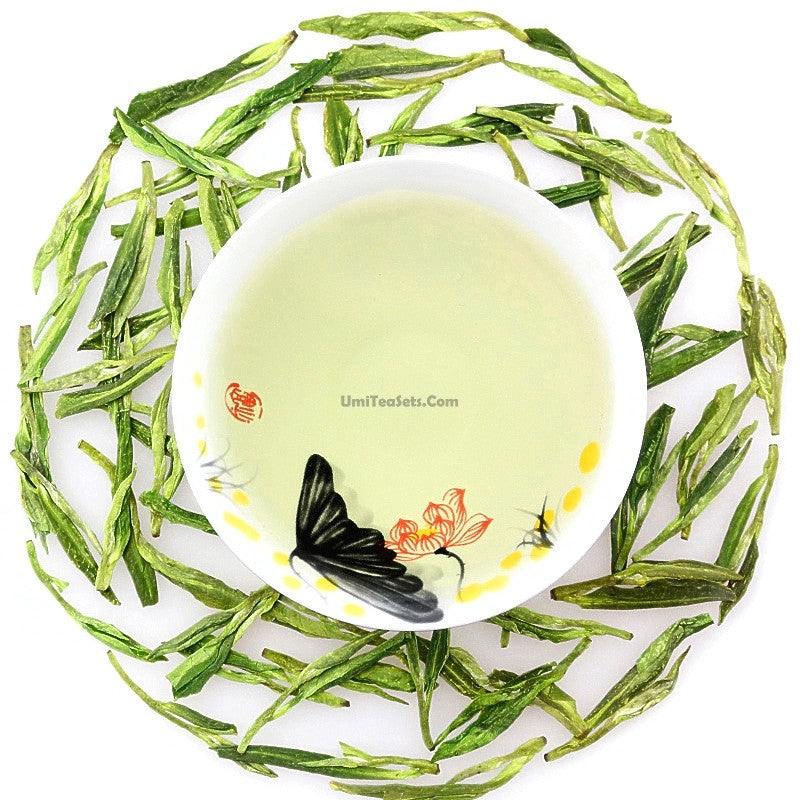 Vendor:Dragon Well Lung Ching Green Tea - COLORFULTEACOLORFULTEA
Vendor:Dragon Well Lung Ching Green Tea - COLORFULTEACOLORFULTEA- Regular price
-
$4.90 USD $34.98 USD - Regular price
-
- Sale price
-
$4.90 USD $34.98 USD
Quick view
-
Dragon Pearl Jasmine Green Tea - COLORFULTEA
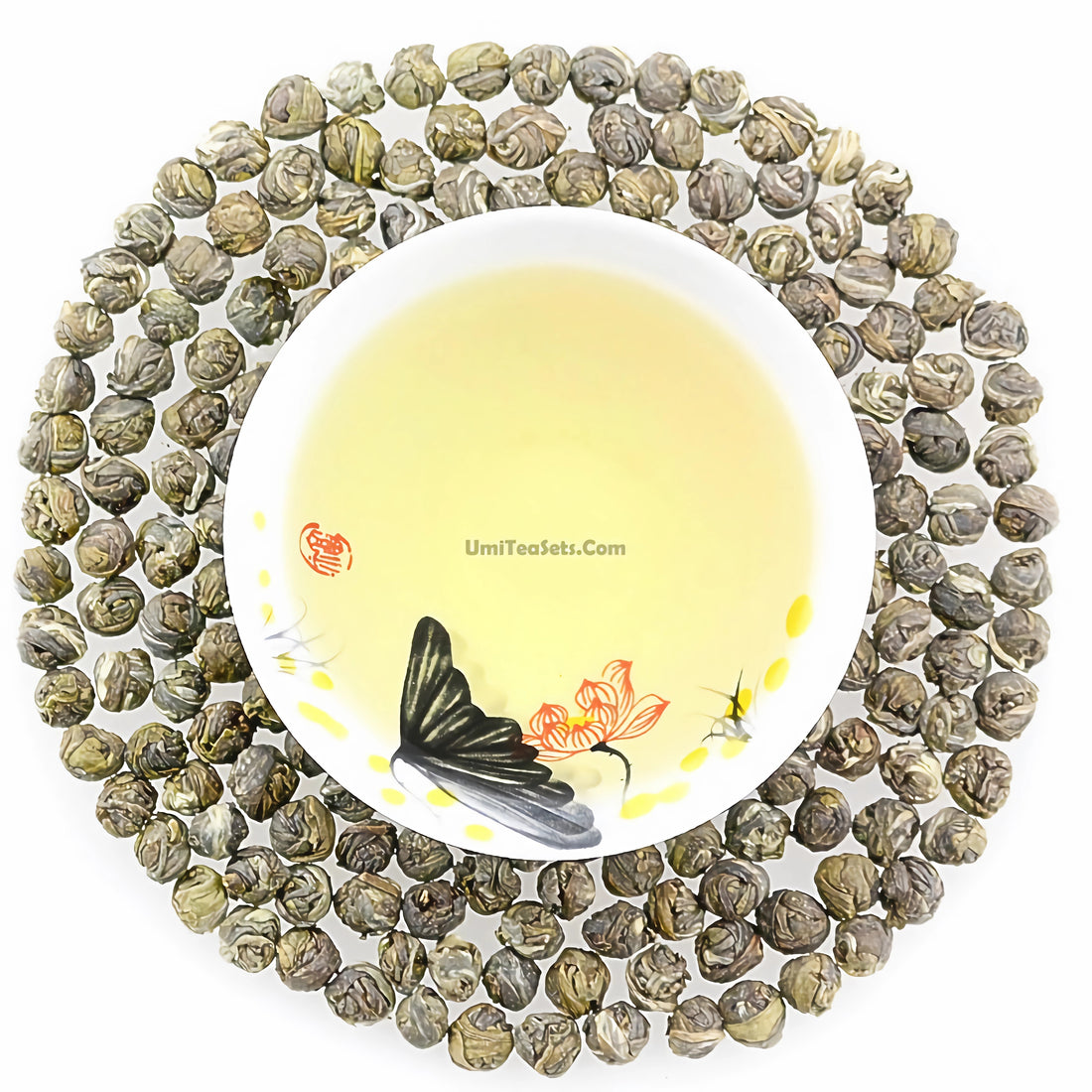 Vendor:Dragon Pearl Jasmine Green Tea - COLORFULTEACOLORFULTEA
Vendor:Dragon Pearl Jasmine Green Tea - COLORFULTEACOLORFULTEA- Regular price
-
$4.90 USD $37.98 USD - Regular price
-
- Sale price
-
$4.90 USD $37.98 USD
Quick view
-
Bai Hao Oolong Tea - COLORFULTEA
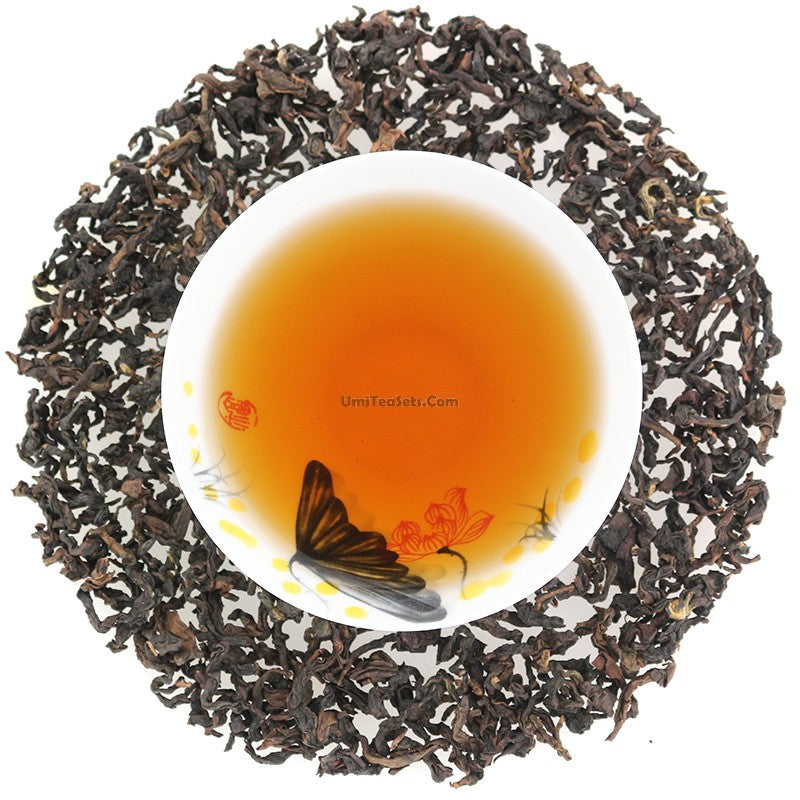 Vendor:Bai Hao Oolong Tea - COLORFULTEACOLORFULTEA
Vendor:Bai Hao Oolong Tea - COLORFULTEACOLORFULTEA- Regular price
-
$4.90 USD $28.98 USD - Regular price
-
- Sale price
-
$4.90 USD $28.98 USD
Quick view
-
Tie Guan Yin Tea - COLORFULTEA
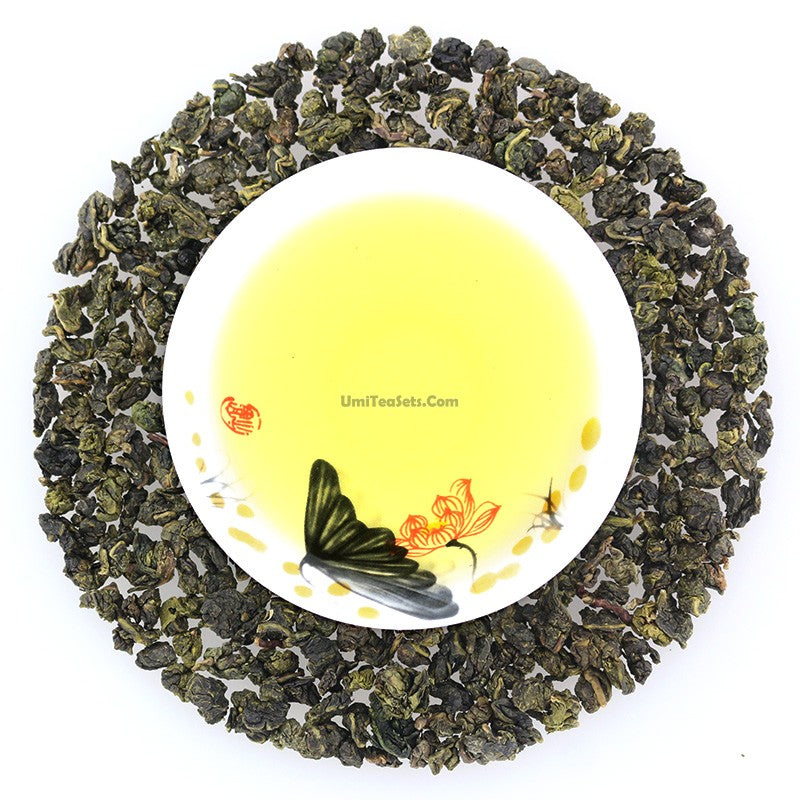 Vendor:Tie Guan Yin Tea - COLORFULTEACOLORFULTEA
Vendor:Tie Guan Yin Tea - COLORFULTEACOLORFULTEA- Regular price
-
$4.90 USD $37.98 USD - Regular price
-
- Sale price
-
$4.90 USD $37.98 USD
Quick view
-
Da Hung Pao Oolong Tea - COLORFULTEA
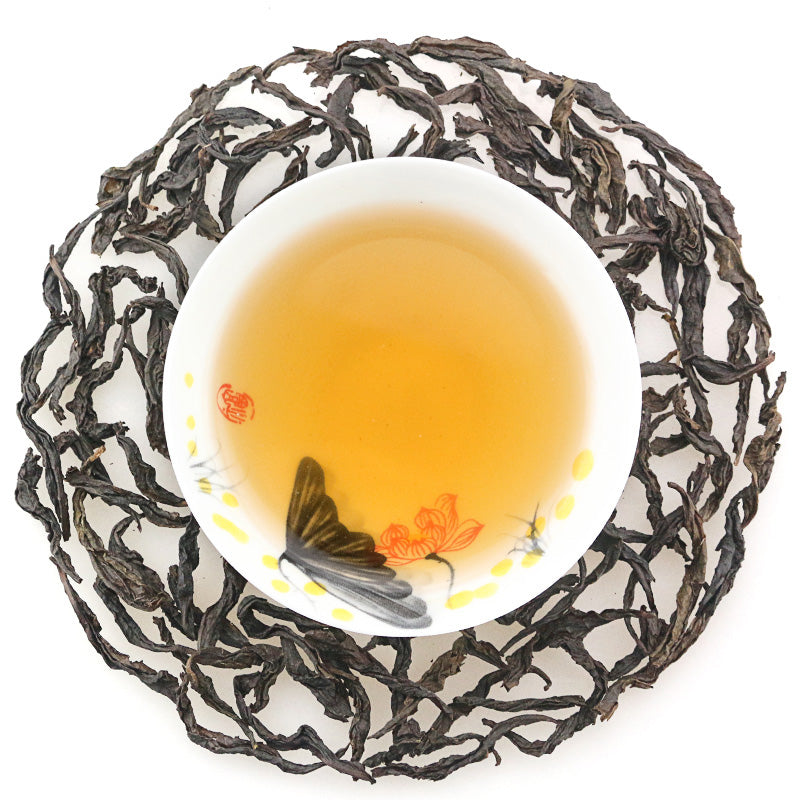 Vendor:Da Hung Pao Oolong Tea - COLORFULTEACOLORFULTEA
Vendor:Da Hung Pao Oolong Tea - COLORFULTEACOLORFULTEA- Regular price
-
$4.90 USD $29.98 USD - Regular price
-
- Sale price
-
$4.90 USD $29.98 USD
Quick view
-
Raw Toucha - COLORFULTEA
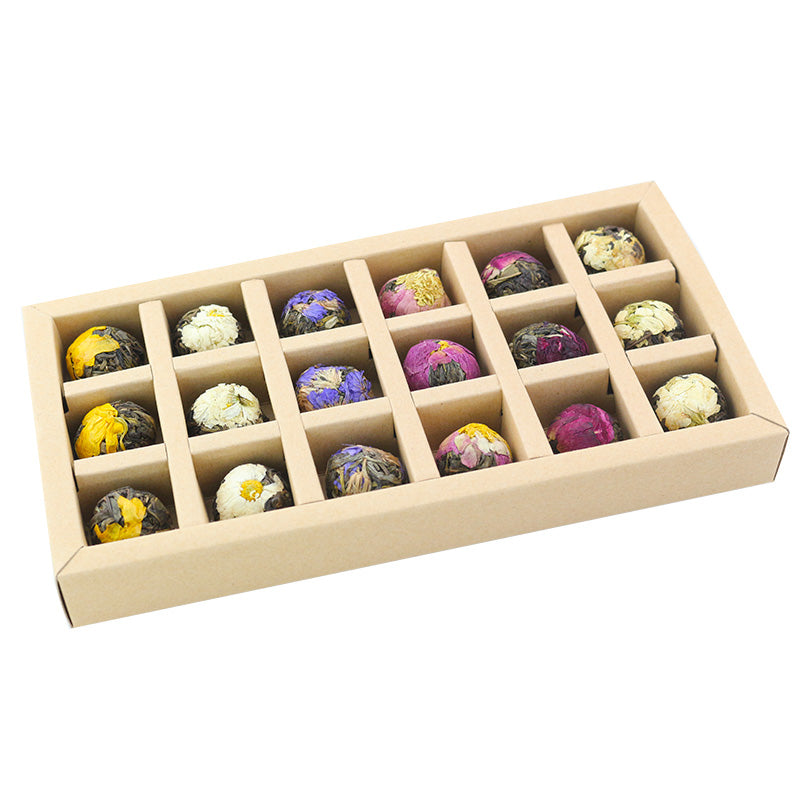 Vendor:Raw Toucha - COLORFULTEACOLORFULTEA
Vendor:Raw Toucha - COLORFULTEACOLORFULTEA- Regular price
-
$25.87 USD - Regular price
-
- Sale price
-
$25.87 USD
Quick view
-
Aged Puer Tea - COLORFULTEA
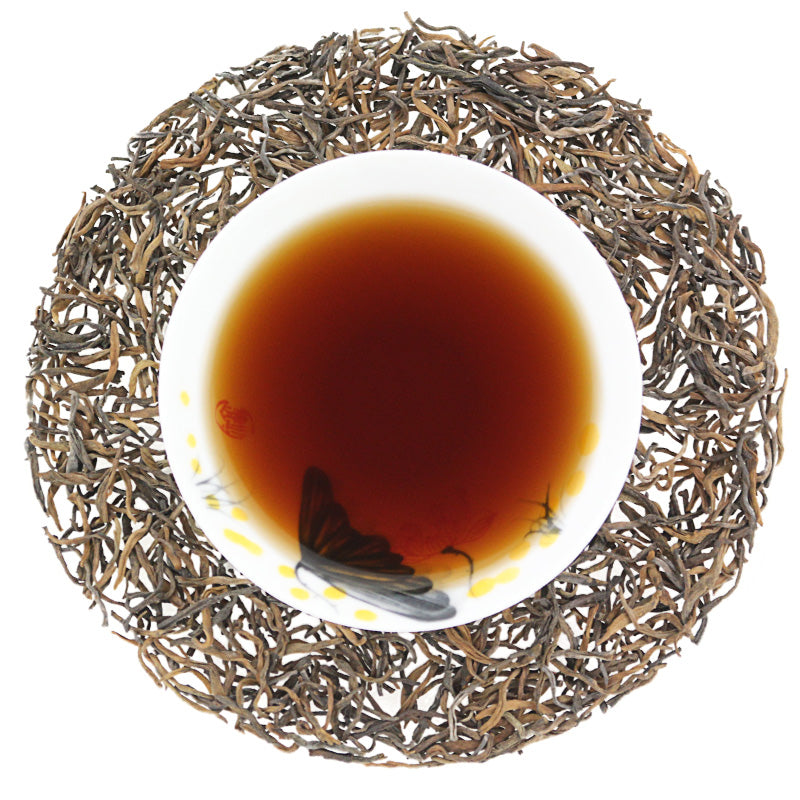 Vendor:Aged Puer Tea - COLORFULTEACOLORFULTEA
Vendor:Aged Puer Tea - COLORFULTEACOLORFULTEA- Regular price
-
$4.90 USD $34.98 USD - Regular price
-
- Sale price
-
$4.90 USD $34.98 USD
Quick view
-
Meditation Sleeping Tea Blend - COLORFULTEA
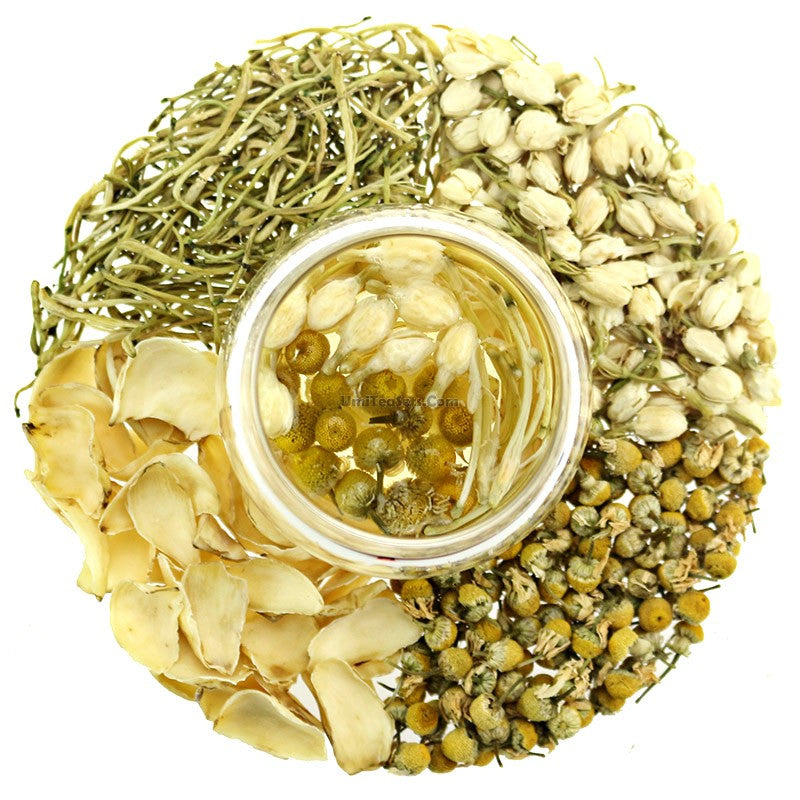 Vendor:Meditation Sleeping Tea Blend - COLORFULTEAUmi Tea Sets
Vendor:Meditation Sleeping Tea Blend - COLORFULTEAUmi Tea Sets- Regular price
-
$4.90 USD $29.98 USD - Regular price
-
- Sale price
-
$4.90 USD $29.98 USD
Quick view
-
Golden Bud Jin Jun Mei Tea - COLORFULTEA
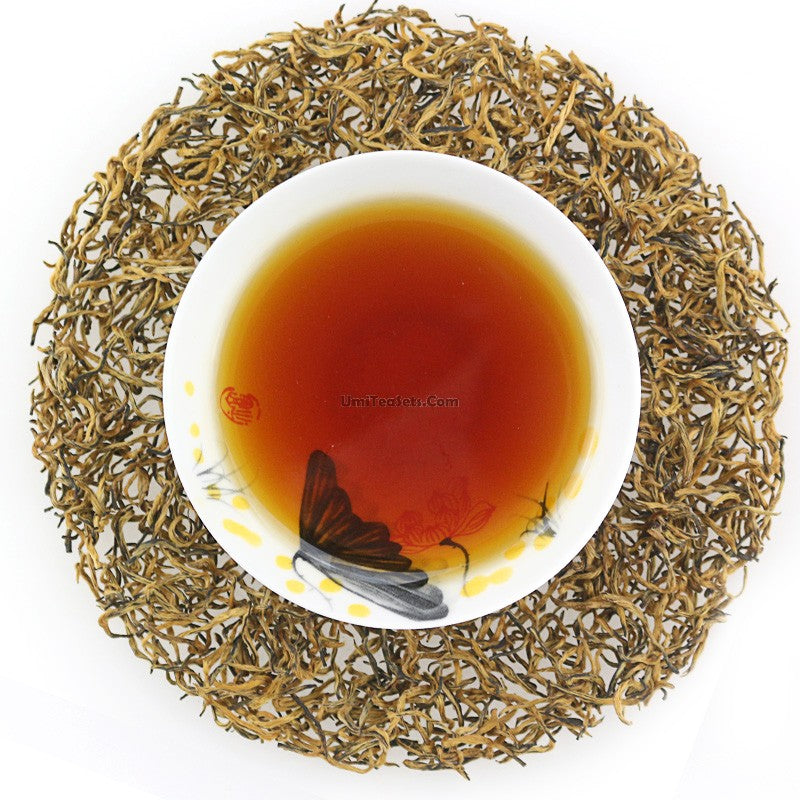 Vendor:Golden Bud Jin Jun Mei Tea - COLORFULTEACOLORFULTEA
Vendor:Golden Bud Jin Jun Mei Tea - COLORFULTEACOLORFULTEA- Regular price
-
$4.90 USD $39.98 USD - Regular price
-
- Sale price
-
$4.90 USD $39.98 USD
Quick view
-
Ripened Puer Tea Cake - COLORFULTEA
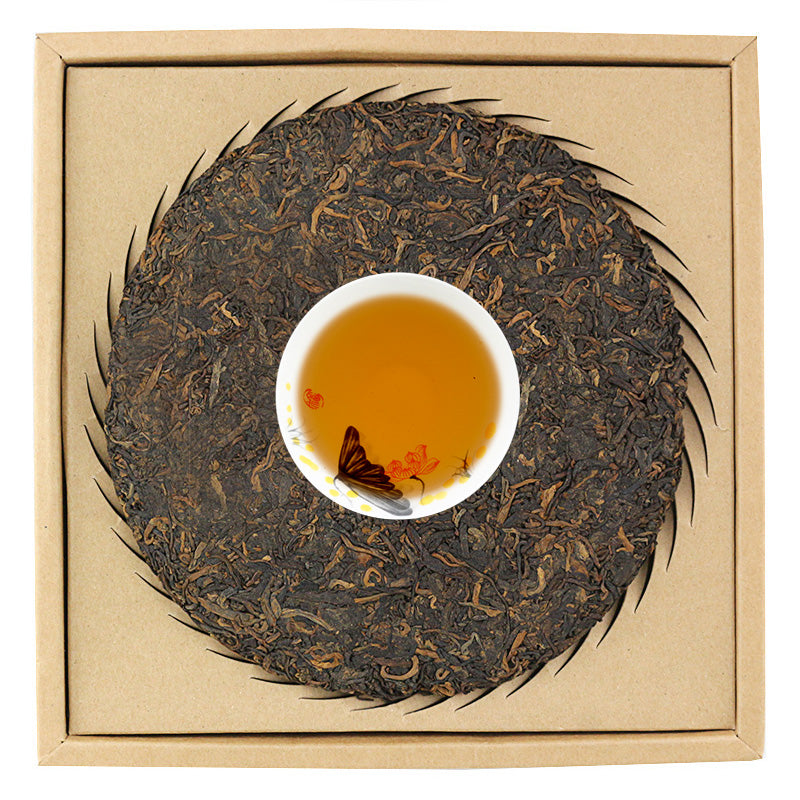 Vendor:Ripened Puer Tea Cake - COLORFULTEACOLORFULTEA
Vendor:Ripened Puer Tea Cake - COLORFULTEACOLORFULTEA- Regular price
-
$35.20 USD - Regular price
-
- Sale price
-
$35.20 USD
Quick view
-
Xinhui Citrus Ripe Puerh Tea - COLORFULTEA
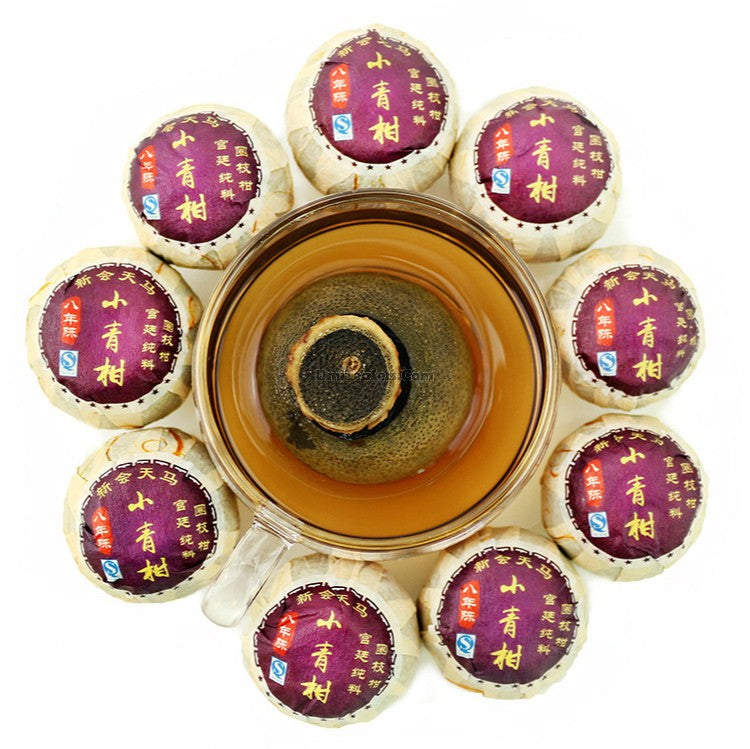 Vendor:Xinhui Citrus Ripe Puerh Tea - COLORFULTEACOLORFULTEA
Vendor:Xinhui Citrus Ripe Puerh Tea - COLORFULTEACOLORFULTEA- Regular price
-
$4.90 USD $33.98 USD - Regular price
-
- Sale price
-
$4.90 USD $33.98 USD
Quick view
-
Jasmine Green Tea - COLORFULTEA
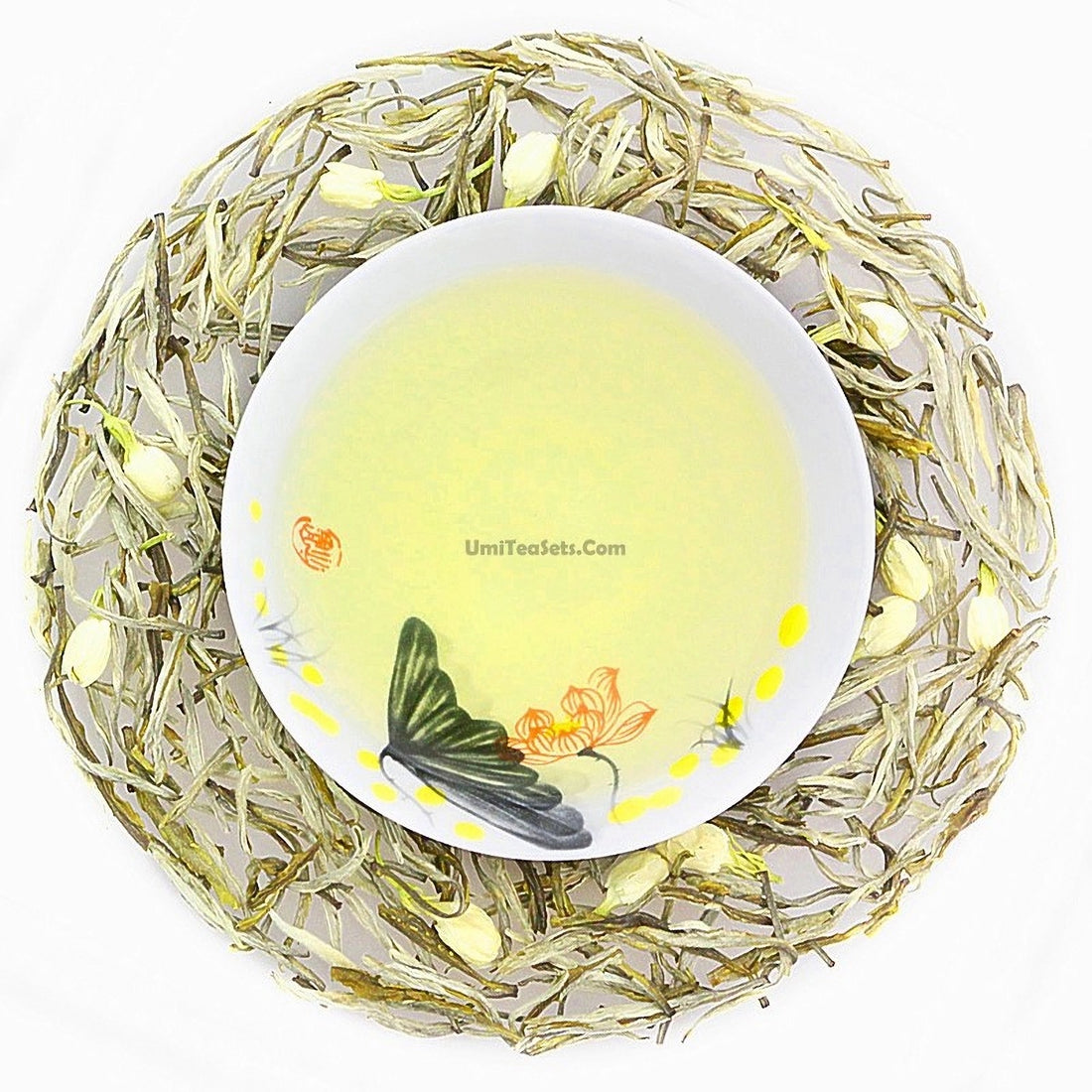 Vendor:Jasmine Green Tea - COLORFULTEACOLORFULTEA
Vendor:Jasmine Green Tea - COLORFULTEACOLORFULTEA- Regular price
-
$4.90 USD $25.98 USD - Regular price
-
- Sale price
-
$4.90 USD $25.98 USD
Quick view
The taste for tea has undergone considerable change. Today, hundreds of teas of distinct origins and qualities are available and new blends of increasingly sophisticated and exotic scented teas are continually being created. Only a few decades ago, retail outlets dealt exclusively in basic traditional teas, stocking no green tea except for Gunpowder, and no white tea at all. The range of scented teas was very limited, and all were based on classic black tea; indeed, black teas with apple, mango, and wild blackberry were very popular at the beginning of the 1980s.
The undisputed birthplace of tea, where it was discovered more than five thousand years ago, China offers some ten thousand different listed gardens. A Chinese proverb has it that to discover them would take more than a lifetime. In the course of the countr's history, the precious leaves have been much coveted and the object of political shenanigans. The various processes of tea-making were also a closely guarded secret for centuries.
Today, the second greatest tea-producing country in the world (with a yield of seven hundred and fifty thousand tons a year), China also benefits from an impressive diversity. It is the only country to produce ail types of tea: white tea, green tea (of three sorts), semi-fermented tea, black tea, and smoked black tea, shaped, and post-fermented.
China boasts seven major tea-producing regions: Yunnan, Anhui, Fujian, Zhejiang, Guangxi, Hunan, and Guangdong.
Scented tea is today based on teas from all over the world, of all types, and each variety has its own evocative name. Tastes evolve, but the enthusiasm for tea is not a passing fad. Sales of tea progress continuously year after year.
Tea is excellent for health. People are living longer than ever, and they want to consume products with proven health benefits. Tea can very much form a part of this lifestyle.
We are specialists in tea leaves, offering a varied range of loose leaf tea online. Enjoy our tea leaf! Our tea leaves are made using premium quality, hand-picked organic tea leaves and herbs, blended with only real fruits, flowers and spices.
The Cultivation of Tea
THE TEA PLANT IS AN EVERGREEN TREE OF THE GENUS CAMELLIA, ONE OF 30 MEMBERS OF THE THEACEAE FAMILY. IN ITS WILD STATE, THE TEA TREE CAN REACH A HEIGHT OF 98 FEET (30 M), AND, ALTHOUGH IT ALSO BEARS FLOWERS AND FRUIT, ONLY THE LEAF IS USED TO PRODUCE TEA. DARK GREEN IN COLOR AND ELLIPTICAL IN SHAPE, TEA LEAVES HAVE CRENELLATED EDGES AND CAN MEASURE FROM 1/4 INCH TO 10 INCHES (5 MM TO 25 CM) IN LENGTH. ALTHOUGH IT IS INDISPUTABLE THAT THE TEA TREE ORIGINATED IN XISHUANGBANNA, IN THE CHINESE PROVINCE OF YUNNAN, WHERE IT STILL GROWS IN GREAT ABUNDANCE IN THE WILD, IT IS NOW CULTIVATED ON ALL FIVE CONTINENTS BETWEEN THE 43RD PARALLEL IN THE NORTHERN HEMISPHERE (GEORGIA, IN EASTERN EUROPE) AND THE 27TH PARALLEL IN THE SOUTHERN HEMISPHERE (THE CORRIENTES REGION OF ARGENTINA).
Tea Tree Varieties
Among the 200 species of Camellia theaceae registered today, only one, Camellia sinensis, is used to produce tea. This species includes three main varieties: sinensis, assamica and cambodiensis.
CAMELLIA SINENSIS VAR. SINENSIS
"Sinensis" means "from China," the country where tea was first discovered This variety is thought to be the most ancient variety used in the cultivation of tea.
In its natural state, the Camellia sinensis van sinensis tree can grow to a height of 20 feet (6 m). Its small, dark leaves are light in body. It is a sturdy plant that has greater resistance to cold and drought than other varieties, so it is often grown at high altitudes as well as in regions with difficult climatic conditions, such as parts of China,Japan,Iran and Turkey.
Its productive life is relatively long and in some conditions can last well over 100 years.
CAMELLIA SINENSIS VAR. ASSAMICA
Discovered by Scottish Major Robert Bruce in the region of Assam, India, in the first half of the 19th century, Camellia sinensis van assamica is grown extensively in India, Africa and Sri Lanka. Highly suited to a tropical climate, it is grown mainly on plains and in regions that enjoy abundant rainfall.
Less aromatic than C. s. van sinensis leaves, its large, thick leaves produce a liquor that is quite robust and very dark when oxidized. C. s. var. assamica is the tallest of the C. sinensis varieties. In the wild, some trees can grow to a height of 98 feet (30 m) and live several centuries. Under plantation conditions, however, the productive life of C. s. var. assamica lasts no longer than 30 to 50 years.
CAMELLIA SINENSIS VAR. CAMBODIENSIS
Large and flexible, the leaves of Camellia sinensis var. cambodiensis can grow to a length of 8 inches (20 cm). Its sensorial properties are less appreciated than those of the C s. var. sinensis and C. s. van assamica, therefore, C. s. var. cambodiensis is rarely used for tea cultivation. However, thanks to its excellent capacity for natural hybridization with the other two varieties, it is occasionally used to create new cultivars.
The Cultivar
The term "cultivar," a contraction of the expression "cultivated variety," is used to define a plant species that was created through hybridization or mutation and selected for its specific characteristics. As these characteristics are not necessarily transferable by seeding, the cultivar must be reproduced through cuttings in order to retain the same genetic profile.
As we will see a little farther on, there is a wealth of cultivars that are hardly mentioned jn Western botanical registers but are officially recognized in Eastern botanical lore. For, as well as being highly capable of natural hybridization, the tea tree has been frequently crossbred to make it better adapted to its environment and more resistant to disease, as well as to develop unique aromas.
The Terroir
In addition to the choice of plant material, growing season and quality of the picking,,the characteristics of a plantation - its soil, climate, altitude, latitude - are important factors that greatly influence the quality of a tea. Each region has specific agricultural properties, so the same tea tree will produce different-tasting teas depending on the conditions in which it is grown. The plant will constantly adapt to its environment, producing substances that, notably, can create interesting flavors. The notion of a "terroir" helps define specific characteristics of a particular region or expanse of land, by examining its soil, climate, altitude and latitude in combination with the expertise of the local growers.
SOIL
The quality of the soil and the subsoil, which is an essential element in the cultivation of the tea tree, varies enormously from one region to another. Fortunately, the tea tree is endowed with a formidable ability to adapt, and it will thrive just as well in sedimentary as in volcanic soil. However, for optimum growth, it needs an acidic soil (pH 4.5 to 5.5) because acidity will help it absorb nutrients, Ideally, it should also have a soil that is rich in minerals (nitrogen, potassium, magnesium, etc.) and covered with a deep layer of humus, In addition, its central root needs to , get a solid grip at a depth of up to 6 feet (1.8 m), so the soil must be loose, not limestone or clay. As tea trees need a lot of rain, the most favorable soil will be permeable and drain well but stilI have good moisture retention. A mountainous terrain is often ideal.
CLIMATE
The tea tree grows best in a tropical or subtropical region. It needs plenty of rain,, a minimum of about 60 inches (1,500 mm) a year; and a dry season that lasts no longer than three months. The ideal average temperature is around 65 to 68°F (18 to 20°C), with a minimum of five hours of sunshine a day and a relative humidity of 70 percent to 90 percent.
Tea trees are not very resistant to frost and wintery conditions. With the exception of some cultivars, especially those developed to resist the cold, a tea tree is likely to be killed by temperatures below 23°F (-5 °C). Moreover, if the temperature is too low over the course of the year, its growth will slow considerably.
Tea trees do, however, benefit from climatic variations, which can help develop flavors. The stress caused by weather changes disturbs the chloroplasts in the leaves and triggers a reaction from the plant,which strives to retain chlorophyll in its leaves, ,improving the flavor of the tea. Even the presence of certain insects may improve the flavor.
ALTITUDE
It is not unusual to see tea plantations on the steep slopes of high mountain ranges in Asia for a very good reason: these terrains produce tea of unrivaled quality. While the difficult climatic conditions found at these altitudes can stunt the growth of a tea tree, they are excellent for the development of aromas. Warm days give way to cold nights, and sun exposure is often reduced to a couple of hours a day because of the constant mist during certain seasons. Under these conditions the tea tree's growth is slowed, but the new shoots it produces carry a higher concentration of the aromatic oils that create richer flavors. At an ideal altitude of around 3,300 to 5,000 feet (1,000 to 1,500 m), mist can even be an advantage for a tea tree as, even in the dry season, the new shoots will have the moisture they need to grow. In Taiwan, as in Darjeeling, some of the best harvests are found above 6,500 feet (2,000 m).
LATITUDE
Latitude also has a major impact on the growth of tea trees. It can even be said to determine, to a certain degree, the life rhythm of the tree.
Tea is a perennial plant and, in certain regions close to the equator, its leaves can be harvested all year round. But in regions located beyond 16 degrees north or south,wbere daily sunlight is less than 11 hours for a period longer than five weeks, the tea tree's growth will slow down, and it will become dormant. The harvest is then postponed until the following season,This period of dormancy is highly favorable for the production of good-quality tea. When the plant awakens in the spring, the aromatic ingredients it secretes are more concentrated and often confer an exquisite taste to the tea from the first harvests of the year.
The domestic cultivation of tea began in the fourth century, and the first plantations probably appeared in Sichuan Province in China. Previously, tea was harvested in the forest from ancient trees growing in the wild. There are still ancient tea trees in the forests of Yunnan Province, whose leaves are used to produce rare or unique vintage teas, but today, as a general rule, tea is grown on plantations that are called "gardens" or "estates."
The size of these plantations varies enormously. Some cover less than a couple of acres, others spread over thousands of acres. Either terraced or simply covered in scattered plants, each couple of acres (I ha) usually holds 5,000 to 15,000 tea trees. In China, the smaller gardens may belong to independent growers who carry out all the different stages of production themselves, but the several-hundred-acre estates are usually the property of large corporations that own many other estates and employ thousands of workers.
Most larger tea gardens have a name, as in Darjeeling, but this is not always the case. Elsewhere in India, such as the Nilgiri Hills, and Sri Lanka, many small-scale growers will bring their fresh leaf and sell it to a local manufacturer. These harvests are less specific and often produce lower-grade teas. These teas will often be named after the region or factory that transforms the leaf.
The largest plantations are found on the plains of Assam, Kenya and the other more industrial regions of Argentina. The smallest gardens are usually spread over the hillsides of very steep mountains at altitudes of up to 8,500 feet (2,600 m).
PLANTATION MAINTENANCE
The cultivation of tea requires a lot of work and skill. This is why, in most tea-producing countries, there are research centers devoted to the study and creation of new, more resistarrt cultivars that are capable of adapting to a given climate and offer more interesting sensory characteristics. This work has led to the development of a new growing technique that makes it easier to hybridize and clone the best cultivars. Previously, seeding techniques were quite risky and did not allow the production of uniform crops, especially since the tea tree's prolific natural capacity for hybridization generated new strains that were vastly different from one another.
As well as the constant work of clearing, draining, plowing and weeding that is essential to all agricultural endeavors, tea growers must wait at least three to five years before they see any return on a young tea tree. During this time, the young plant is cared for so that it will become a strong tree. Since, in its natural form, a tea tree can grow to a maximum height of 50 feet (15 m), it is regularly pruned so that ft grows no higher than about 3 feet (1 m), thus making it easier to harvest the leaves. In addition to stimulating the growth of new shoots, this pruning, which is called "shaping," forces the plant to branch out and develop along a horizontal plane, forming a so-called "picking table."
Throughout its average life span of 30 to 50 years, a tea tree will undergo regular pruning to help maintain a healthy yield. In addition to the frequent shaping, the tree will be more heavily pruned every five years to simulate regeneration, strengthening the plant's structure and increasing its growth.
In order to filter the sunshine and introduce essential nitrogen into soil, "shade trees" of other species are used. Pruning waste and straw are strewn between the plants to protect and develop the topsoil.
PICKING TEA LEAVES IS A SIMPLE YET CRITICAL ACTIVITY THAT INVOLVES DETACHING THE YOUNG SHOOTS FROM THE PLANTS. IN ALMOST ALL COUNTRIES, THIS TASK IS ENTRUSTED TO THE DELICATE HANDS OF WOMEN. THE PICKERS MUST PINCH THE DELICATE SHOOTS BETWEEN THEIR THUMB AND FOREFINGER, ACCORDING TO THE TYPE OF PICKING DESIRED, AND THEN PLACE THE LEAVES IN A BAMBOO BASKET OR BAG THAT THEY CARRY BEHIND THEM. IT IS A CRITICAL OPERATION BECAUSE THE QUANTITY OF AROMATIC SUBSTANCES FOUND IN THE LEAVES VARIES ACCORDING TO THEIR DEGREE OF MATURITY. THE YOUNGER THE LEAF, THE HIGHER THE CONCENTRATION OF DESIRABLE AROMATIC COMPOUNDS; HOWEVER, THE YOUNGER THE LEAF, THE SMALLER IT IS AND THE SMALLER THE HARVEST WILL BE. THEREFORE, THE YIELD OF A GARDEN AND THE TASTE QUALITY OF THE TEA WILL DEPEND TO A VERY LARGE DEGREE ON THE MOMENT CHOSEN TO HARVEST THE LEAVES.
The Three Traditional Tea- Picking Styles
The term "pekoe" is used for the young shoot located at the end of each stem (also called the terminal bud). As this bud has not yet unfurled, it is usually covered with a fine down. In fact, "pekoe," from the Chinese pak-ho, is often used to describe the fine down on a newborn’s skin. This pekoe serves as a reference for the three types of tea-leaf picking: imperial picking, fine picking and medium picking.
As it includes only the bud and the first leaf below it, imperial or "super-fine" picking is the most prestigious. It is, in fact, for this reason that in the China of ancient times it was reserved for the use of emperors and high officials, hence the name. It is usually harvested once per year, in the spring. Also of very high quality, fine picking harvests the bud and the first two leaves. Medium picking harvests the bud and the following three leaves.
Today, there are many machines for harvesting tea, but they are less practical on sloped terrain and cannot carry out the delicate picking achieved by the hands of an expert. This is why, to obtain the best harvest in the small gardens on high, steep slopes or in countries where labor costs remain low, manual picking is still prevalent.
It takes 10 pounds (5 kg) of fresh leaves, about 12,000 shoots, to produce 2 pounds (1 kg) of tea. In India, a tea picker will harvest on average 65 to 110 pounds (30 to 50 kg) of leaves per day.
The Tea Families
Before Robert Fortune discovered the "secrets" of tea in the mid-19th century (see page 156), Europeans believed that green teas and black teas came from different plants. We know today that it is the phenomenon of oxidation that modifies the natural state of the leaves, changing the color and taste.
Oxidation is produced by oxidase, enzymes that reacts when the cells of a tea leaf are broken. Reacting with oxygen, these enzymes trigger the oxidation of the leaf, so it is possible to change freshly harvested leaves into any type of tea.
If how the leaves are picked is one of the determining factors regarding the quality of a tea, mastering the process of transforming those leaves, often done through traditional knowledge, is the decisive factor regarding a tea’s final taste. First, oxidation must take place shortly after harvesting, which is why most plan-tations have their own processing plant (a factory) to process the leaves as soon as they arrive from the garden. Smaller growers who do not have their own factory often join together to send their harvest to a larger producer who can process the leaves.
Each family of teas comes from a particular method of processing the leaves, which we will review in. greater detail in relation to each country. For example, to obtain a green tea, the leaves must be "fired" or steamed to disable the enzymes that causes oxidation. A light and controlled oxidation is permitted in the case of wulongs. Whereas with black teas, oxidation is often fully encouraged, with leaves exposed to humidity (80 percent to 90 percent) and to an ambient temperature of 71 to 74°F (22 to 23°C).
There are six main categories or families of tea: white, green, yellow, wulong (or oolong), black and Pu er (or sometimes Pu-erh).
WHITE TEAS
The best white teas come from prized harvests consisting entirely of buds. White teas also undergo the least handling. The leaves are dried naturally or with the help of fans to eliminate some of their moisture. The liquid they yield is delicate, extremely refreshing and less likely to contain much caffeine.
GREEN TEAS
Produced mainly in China and Japan, where over 1,500 varieties can be found,green teas are the preferred beverages of these countries. The fresh leaves are dehydrated to prevent any possibility of oxidation, which increases the "green," plant characteristics of the beverage.
YELLOW TEAS
The rare yellow teas undergo slight post-oxidation by steaming under a damp cloth while the leaves are stil warm from being dehydrated.This produces a slight enzymic oxidation, giving the leaves and the liquid obtained from them a yellowish hue.
WULONG TEAS
Wulong teas (often referred to as "oolong" in English; "wulong" is the official Mandarin translation), processed according to a three-century-old tradition, are teas that undergo partial oxidation before being twisted or rolled. The Chinese and Taiwanese produce two main types: teas that undergo 10 percen to 30 percent oxidation and whose slightly sweet floral aromas are similar to those of green tea, and those that undergo 40 percent to 70 percent oxidation, which gives them woody, fruity and sometimes caramelized notes. "Wulong" means "black dragon" and refers to the black snakes that coil around the branches of the tea trees. To reassure the children who were scared of them, adults told them they were really little black dragons.
BLACK TEAS
Black teas undergo a more rigorous oxidation. Referring to the copper color of the infusion they produce, the Chinese call them red teas.
PU ER STYLE TEAS
Pu er (also Pu-erh) teas,which originated in Yunnan Province (in the south of China),where tea was harvested from ancient trees growing in the wild before being compressed for transportation, remain a Chinese specialty. Chinese medicine practitioners have used them for centuries for their digestive properties and cleansing action.
Flavored or Scented Teas
In addition to the six families of "natural" teas, it is possible to buy teas to which flower, fruit or spice-based flavors have been added in order to create a new type of tea. Although this is a totally different approach, it is undeniable that the flavoring of tea is an art in its own right and must be taken into account as another facet of this fascinating world.
Scented teas are created by adding flowers or blended spices to the leaves, whereas flavored teas are produced by spraying the leaves with the essential oils of fruits or wiith synthetic flavorings.
The preparation of a flower-scented tea traditionally involves the use of a layered dryer in which rows of flowers are alternated with rows of tea leaves. In this process, the quality of the flowers is more important than the quality of the tea, but a lot of care must be taken to achieve the right balance between the slight bitterness of the tea and the fragrance of the flowers. Heated to a temperature of 104°F (40°C) for a period of about 12 hours, the leaves absorb the perfume of the flowers with which they are dried. Depending on the intensity of the aroma desired, the tea leaves will be treated four to eight times, with the flowers being changed every 12 hours.
Smoked Teas
Produced from coarsely harvested teas called su-chong, smoked teas are dried over burning spruce, which gives them a specific flavor. This process was probably discovered by accident in Fujian Province in the early 19th century. Legend has it that a tea grower - forced by the government to give up his warehouse but not wanting to lose his latest crop, which was still moist - had the idea of placing the leaves over some spruce that was burning nearby. The leaves dried quickly and, in the process, acquired a smoky aroma. Although he was proud of his discovery, the grower had difficulty finding someone to buy his tea. Finally, a foreign merchant, enchanted by the smoky character of the tea, brought it back with him to Europe, where it became very popular.
CAMELLIA SINENSIS (L) O. KUNTZE The tea tree has been known to the Chinese since time immemorial, but in the West the first scientific description of it was written in 1712, by Dr. Kaempfer, a physician with the Dutch East India Company, who called it Thea japonense. Some 40 years later, in his masterwork Species Plantarum, which lists all the plants then known to man, Carl von Linnaeus renamed it Thea sinensis. At a later date he distinguished between two different varieties: Camellia japonica and Camellia sassanqua. Note that, at the time, there were two accepted terms to define the plant: Thea and Camellia. It was not until 1959, after numerous debates among botanists,that the name Camellia was officially adopted by the International Code of Botanical Nomenclature. The term Camellia is an homage to a Moravian Jesuit called Georg Joseph Kamel (1661-1706), who studied botany in Asia at the end of the 17th century. The adjective sinensis was added by Linnaeus.The letter "L" also refers to the initial of Linnaeus, while "O. Kuntze" is the name of the botanist who, in 1881, combined them all to create the scientific name.
TAKING CUTTINGS Today, the most common method of creating new strains of tea is by taking cuttings. This technique for the propagation of plant species consists of cutting a leaf-bearing stem from a mother plant, then planting it directly into the soil in order to obtain a new plant endowed with the same genetic characteristics. This technique ensures a more homogeneous output with the same sensorial properties and higher yields. However, this method of production can be problematic, as all the plants obtained are clones of a mother plant that has both strengths and weaknesses. If a tree contracts a disease, for example, it may quickly spread throughout the plantation. It is to circumvent this risk that the propagation of tea trees is usually performed using a combination of the two methods of reproduction: seeding and taking cuttings.
Different Ways of Drinking Tea
Consumed by millions of enthusiasts around the world, tea has, of course, been adapted to different cultures. Long before Westerners regarded it as an aristocratic beverage reserved for the elite, the Chinese consumed tea primarily for its medicinal properties. It was used as a flavoring, in soups or mixed with other ingredients, and it allowed many nomadic peoples to balance diets that were low in vitamins but rich in fat In the first century BCE, Shen Nong's Herbal Classic, the first work on medicine, advised that the stimulating properties of tea "give joy to the body and sparkle to the eyes."
Over the centuries and through successive dynasties, the processing of tea leaves as well as the different ways of preparing tea evolved considerably. In China, the way of drinking tea can be classified under three main periods that correspond to three important dynasties (Tang, Song and Ming). It was successively boiled, beaten then brewed. In the second century CE, tea began to be seen as a beverage in its own right, but it was reserved for emperors and other high officials. It was only later, toward the seventh century, that tea began to be consumed by the common people. Under the Tang dynasty (618-907), Lu Yu, recognized as the first master of Chinese tea, wrote the first book devoted to tea, describing its cultivation and preparation. He raised the preparation of tea to an art. This is what he says in the Cho Jing, or The Classic of Tea:
Tea has a thousand and one faces. If we just consider the broad categories, some tea cakes have the tanned look of boot leather, others are rounded like a zebu's chest or curled into wreaths like the clouds floating over the mountain. Still others look like waves caressed by the breeze, or fine silver tiles, transformed into a thick, creamy elixir by pouring a little water over them.
Tea has long been a part of commercial exchange. People began to trade using tea at the end of the sixth century, first between neighboring countries then farther afield, throughout the Tang dynasty. At the time, pounds of tea were exchanged for skins and horses. In the seventh century, as the Chinese were gradually making it their national drink, great harvests from Yunna and Sichuan Provinces were transported as far north as Lhasa in Tibet, following what would later become the Tea Road: a 930-mile (1,500 km) route fraught with dangers over which a return trip took an entire yean On this legendary journey, encountering nomadic tribes from the west of China as well as Mongols, Turks and Tibetans, tea was adopted by even more enthusiasts.
In Tibet, where tea was endowed with significant spiritual value, it was enhanced with salt, yak butter and goat's milk. This salty beverage prepared by brewing is a symbol of hospitality and is still served today, as it was then, in wooden bowls.
Introduced by Buddhist monks who brought it back from their pilgrimage to China, tea was first tasted in Japan in the ninth century.The Japanese transformed the daily pleasure of drinking tea into a refined, ritualized and highly spiritual practice.They invented the"Way ofTea" (chado), a complete art of living that incorporates the basic principles of Japanese culture. This ritual is based on the fundamental concepts of harmony, respect, purity and serenity.
As more and more trade routes were established, tea could be more easily exported.The construction of several ports, especially in Canton during the Song dynasty (960-1279), led to the organization of a maritime trade route linking China to Korea and Japan. In the 17th century, thanks to the trading caravans, Chinese tea began to arrive in Russia, Iran, Turkey and Egypt.
In Russia, the custom of drinking tea spread throughout the 18th century, after the invention of the samovar In its traditional form, this device uses charcoal to heat a central cavity filled with water over which is placed a small teapot containing a highly concentrated infusion. Each guest can then prepare his or her tea according to taste by diluting concentrated tea with the hot water Iran. Turkey and Afghanistan all adopted the samovar.
In Europe, the first shipment of tea was brought ashore from a Dutch trading ship in the port of Amsterdam in 1610.The Dutch subsequently shipped tea to Italy, Germany and Portugal.
In 1645,the first cases of tea from China reached the port of Londoin. Immediately adopted by Catherine of Braganza, the wife of the English king, the habit of drinking tea spread quickly throughout the court and the upper echelons of English society. But it was only after the introduction of "five o'clock tea" by Anne, Duchess of Bedford (1783-1857), that drinking tea became part of the daily routine of the working class. Thanks to the Industrial Revolution, working hours were changing, and the evening meal was being served a few hours later than before, which left time for a pause to drink tea. In some ways, it was this pause that helped introduce tea to the lower classes.
High tea is a special moment,a break in the rhythm of daily life and a symbol of sharing. Traditional high tea is served with milk and sugar and accompanied by sandwiches, scones, biscuits or cakes.
In India, during the 19th century, when China still held a monopoly over the tea trade, the British began to cultivate it themselves in order to avoid the Chinese middlemen. Today, tea continues to play an essential role in the Indian economy as well as in the lives of the people. The preference is for strong tea mixed with several spices and boiled in milk (chai). This beverage, usually bought from street vendors, is served in a disposable earthenware bowl that is traditionally thrown on the ground after use.
In Morocco, the custom of drinking mint tea was popularized in the 19th century and survives today as an important rite of hospitality and conviviality. Tea is the national drink, consumed at all levels of society and at all hours the day and night It is prepared in different ways according to the region, but generally the tea is boiled in a metal teapot to which mint and sugar (sometimes even verbena or absinthe) are added. The mint tea is then poured into glasses, always from a great height to cool the tea and create a frothy beverage.
FIRST REFERENCE Although various ancient Chinese texts mention a grass called tu, referring to a bitter plant that was served during ancestor worship ceremonies, the consumption of tea is documented for the first time in the Shijing (The Book of Songs, dating from the seventh century BCE).
Four major areas producing tea
Districts producing tea in China generally are the south of Qinling Mountains and the Huaihe River. It can be divided into four districts.
Southwest district
Southwest district produce broken black tea, green tea, Pu'er tea, special nice tea, scented tea and so on. These places are located in the south of Milun Hill, Daba Mountain, north of Red River, Nanpan River, Ying River, west of Shennongjia, Wushan Mountain, Fangdou Mountain, Wuling Mountain, east of the Dadu River, including Guizhou, Sichuan, Yunnan North, southeast Tibet.
South China district
South China mainly produces black tea, Purer tea, Liupu tea, and Dayeqing. Those places lie to north of Dazhang Greek, Yan Stony Brook, Mei River, Lian River, Xun River, Red River, Nanpan River, Wuliangshan, Baoshan, Ying River, including South and centre of Fujian, Taiwan, South Guangdong, Hainan, southern Guangxi, South of Yunnan and other places.
North of Yangtze River
North of Yangtze River is the northernmost districts, mainly producing Green tea, such as Liu' an Guapian, Xinyang Maojian and so on. South from the Yangtze River, north to Qinling Mountains, the Huaihe River, west from Daba Mountain, east to Shandong Peninsula, including Gannan, southern Shanxi, northern Hubei, southern Henan, northern Anhui, northern Jiangsu, Southeastern Shandong and other places.
South of Yangtze River
South of Yangtze River is the district producing green tea, ,black tea, Oolong tea,, scented tea and special nice tea, such as West Lake Longjing, Huangshan Maofeng, Dongting Biluochun, Junshan silver needle, Lushan Fog and so on. Located in the south of the Yangtze River, these districts include Dazhang Creek, Goose Stony Brook, Meijiang, north to Lianjiang, including northern Guangdong, northern Guangxi, north central Fujian, Hunan, Zhejiang, Jiangxi, Hubei, southern Anhui, southern Jiangsu and other places.












